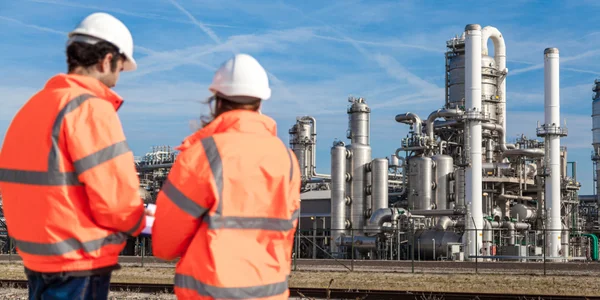Cyclone Dust Collector
- Electrostatic Precipitators
- Reverse Air Bag Houses
- Fabric filters
- Hybrid electro filters
- Flue Gas Desulphurization
- Forced draught cooler
- Scrubbers
- Gas cleaning plants
- Cyclones
- Multiclones
- VOC + Odour removal system
- Dust extraction system
- Fumes extraction system
- Explosion protection devices
- Fans and blowers
- Waste water treatment
- Air to Air Heat Exchanger
Offices
HEADQUARTER

Germany
-
Intensiv Filter Himenviro Technologies GmbH
Neustraße 45 - 49, 42553, Velbert, Deutschland/Germany - +49 20534200990
REGIONAL OFFICE

Great Britain
-
Intensiv Filter Himenviro UK Limited
47, Bath Street WS13BX, Wallsall West Midlands, Great Britain - +44 1922 628893
REGIONAL OFFICE

United Arab Emirates
-
Intensive Filter Himenviro Technologies FZE – LLC
Business Centre, Sharjah Publishing City Free Zone, Sharjah, UAE - +971-556074697
REGIONAL OFFICE

India
-
Intensiv-Filter Himenviro Private Limited
D-247/11, Sector-63, Noida - 201301, Uttar Pradesh, India - +91-120-4642-500
REGIONAL OFFICE




India
-
Intensiv-Filter Himenviro Private Limited
D-247/11, Sector-63, Noida - 201301, Uttar Pradesh, India - +91-120-4642-500
REGIONAL OFFICE




India
-
Intensiv-Filter Himenviro Private Limited
D-247/11, Sector-63, Noida - 201301, Uttar Pradesh, India - +91-120-4642-500
Centrifugal Collectors or Cyclones For Industry
Cyclones are dust collection device that separates particulate from the air by centrifugal force. The cyclone operates by making a vortex out of the incoming airstream. The inertia of the particles keeps them moving in the original order and separates them from the airstream as the airstream is pushed to change directions. The interactions inside a cyclone are complicated despite the cyclone’s simplicity in appearance and operation. The existence of two vortices during operation offers a straightforward explanation for what is happening inside a cyclone. The larger particles are carried downward by the main vortex as it spirals. Near the cyclone’s base, an inner vortex forms and spirals upward, carrying smaller dust particles.
Cyclones are inexpensive, low-maintenance, and temperature-resistant machinery. Additionally, they enable the dry recovery of the product and lessen the burden on the primary collector. Cyclones, on the other hand, provide unique design difficulties and are difficult to predict in terms of performance. Accurate intake data are essential, yet they take up a lot of plant area. Cyclones perform poorly at removing fine particulates. They are often used as a pre-cleaner to get rid of larger particles that could harm fabric collector bags or clog wet scrubbers otherwise. It should be noted that adding a cyclone to a ventilation system may not reduce the overall system resistance since the pressure drop of the inertial cyclone collector may more than equal the reduction in resistance at the baghouse caused by lower dust loading. Pressure drops range from 3 inches wg for inertial cyclone collectors with low efficiency to up to 8 inches wg for models with higher efficiency.
Some key benefits of Cyclone dust collectors
- Cleaner and Safer Method
- Reduced Cleaning Frequency
- Better Air Filtration
- Better Airflow Efficiency
- Lower Level of Noise
Application
Cyclone Dust Collector Applications
A cyclone dust collector machine frequently serves as a low-cost and low-maintenance stand-alone dust collector. They have the advantage of being quickly cleaned to accept the next product batch eliminating the need to clean any remaining lines from bag filters which is a time-consuming and tedious process. With a dual-stage dust collection system, the cyclone dust collection system is equipped to handle both coarse particles as well as fine dust. Cyclone dust collectors are often used as pre-cleaners to remove the majority of large particles before processing in a more efficient bag house. The ones made by dust collector manufacturers are characterized by high efficiency, large processing volume, and stable performance.
The Dust collector has no moving or rotating parts and as a result, it requires minimum maintenance. The dust collecting machine can be designed according to the application desired in order to yield better performance. Smaller footprints of the Dust Collector make it consume lesser floor space and hence find no problem while storing. The dust collection machine comes in several variants, namely- Single/mono Cyclones, Twin Cyclones, Quad/Hexa, or Octa & Modular Cyclones. The cyclone dust collector has numerous applications and is used for Guar Gum Processing, Fly Ash Handling plants, Buffing Machines, Shot & Sand Blasting & many more.


Process
Our Services
Case Study
Frequently Asked Questions
1. What is a cyclone dust collector?
A cyclone dust collector is a device that removes dust and debris from the air using a spinning motion. As air enters the collector, it spins rapidly, causing heavier dust particles to move to the outer edges and fall into a collection bin. Cleaner air then exits through the top. This method is effective for removing large dust particles from the air.
2. How does a cyclone dust collector work?
In a cyclone dust collector, dirty air enters a cylindrical or conical chamber at high speed. The air begins to spin, creating a cyclone effect. Due to centrifugal force, heavier dust and debris are pushed outward against the chamber walls and then fall into a collection bin below. The cleaned air, now free of large particles, moves upward through a central outlet and is either released or further filtered.
3. What factors influence cyclone dust collector design?
Designing a cyclone dust collector involves considering factors like the size and density of dust particles, the volume of air to be processed, and the desired efficiency of dust removal. The shape and size of the cyclone chamber, as well as the speed of the incoming air, are crucial in determining how effectively the collector separates dust from the air.
4. Who are some cyclone dust collector manufacturers in India?
Several companies in India manufacture cyclone dust collectors, including Dynavac, which offers a range of cyclone dust collectors suitable for various industrial applications.
5. What is the difference between a cyclone dust collector and a centrifugal dust collector?
The terms “cyclone dust collector” and “centrifugal dust collector” often refer to the same type of device. Both use centrifugal force to separate dust particles from an air stream. In these systems, the spinning motion forces heavier particles outward, where they can be collected, allowing cleaner air to exit the system.
6. How efficient are cyclone dust collectors in removing dust particles?
Cyclone dust collectors are highly efficient at removing larger dust particles, often capturing up to 99% of particles with a diameter greater than 10 microns. However, they are less effective at capturing very fine particles. For applications requiring the removal of fine dust, cyclone collectors are often used in combination with other filtration systems to achieve higher overall efficiency.
7. What maintenance is required for a cyclone dust collector?
Maintaining a cyclone dust collector involves regularly inspecting the system for wear and tear, ensuring that the collection bin is emptied to prevent overflow, and checking for any blockages or leaks in the system. Since cyclone collectors have no moving parts, maintenance is generally straightforward, but regular checks are essential to ensure optimal performance.
8. In which industries are cyclone dust collectors commonly used?
Cyclone dust collectors are widely used in industries such as woodworking, metalworking, pharmaceuticals, and agriculture. They are particularly effective in applications where large volumes of coarse dust are generated, providing an efficient means of maintaining air quality and protecting equipment from dust-related damage.
9. Can cyclone dust collectors handle explosive or combustible dust?
Cyclone dust collectors can be used to handle explosive or combustible dust; however, special considerations must be taken into account. This includes ensuring the system is properly grounded to prevent static electricity buildup and may involve incorporating additional safety features such as explosion vents or suppression systems to mitigate the risk of dust explosions.
10. How can Intensiv Filter Himenviro assist with cyclone dust collection solutions?
Intensiv Filter Himenviro specializes in providing customized cyclone dust collection solutions tailored to specific industrial needs. Their expertise includes designing efficient systems that effectively separate dust particles from air streams, ensuring compliance with environmental standards and enhancing workplace safety.








